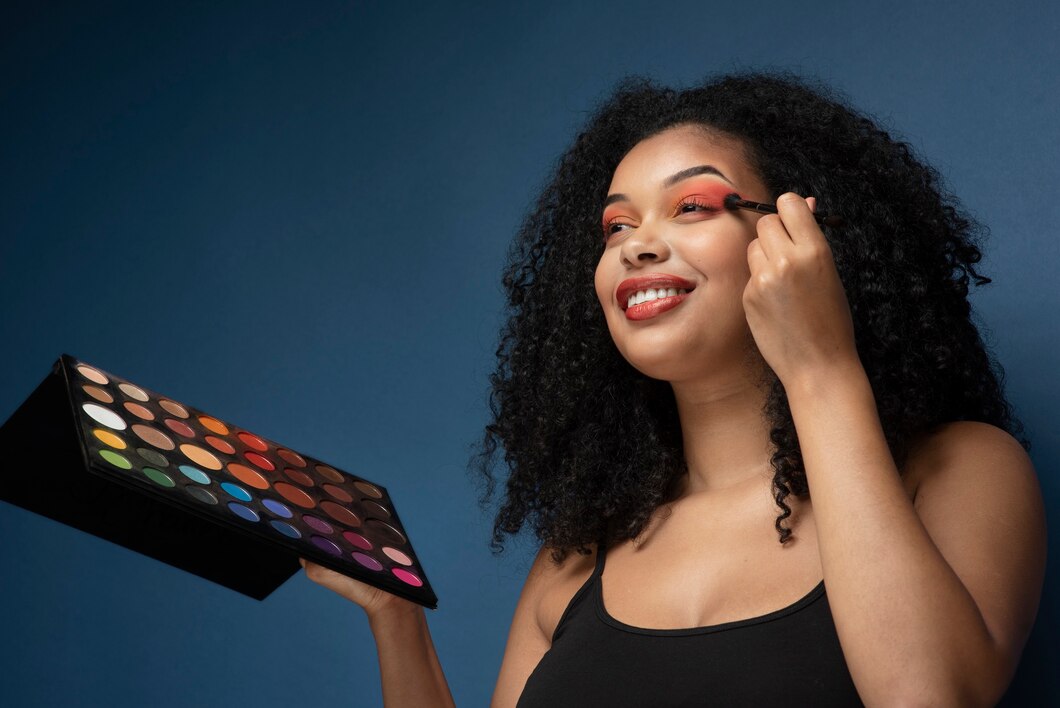Understanding the science of color theory can transform your makeup routine from ordinary to extraordinary. By selecting shades that complement your skin tone, you can enhance your natural beauty and achieve a harmonious look. Here’s a guide to help you navigate the world of color theory and choose the perfect makeup shades for your skin tone.
Understanding Color Theory
Color theory involves the study of how colors interact, the visual effects of color combinations, and the principles that guide color mixing. At its core, color theory helps us understand which colors work well together and why. When it comes to makeup, applying color theory can ensure that your makeup shades enhance your natural features rather than clash with them.
Determining Your Skin Tone and Undertone
Before diving into makeup shades, it’s crucial to identify your skin tone and undertone:
- Skin Tone: Your skin tone refers to the surface color of your skin, typically categorized as fair, light, medium, tan, or deep.
- Undertone: Undertone is the subtle hue beneath the surface of your skin and remains consistent regardless of tans or changes in skin color. Undertones are generally classified as cool, warm, or neutral.
How to Determine Your Undertone:
- Cool Undertones: Your skin has pink, red, or blue hues. Veins on your wrist appear blue or purple.
- Warm Undertones: Your skin has yellow, golden, or peach hues. Veins on your wrist appear green.
- Neutral Undertones: Your skin is a mix of both warm and cool tones. Veins on your wrist are not clearly green or blue.
Choosing Makeup Shades Based on Undertone
Foundation and Concealer
- Cool Undertones: Opt for foundations and concealers with a pink or red base.
- Warm Undertones: Choose foundations and concealers with a yellow or golden base.
- Neutral Undertones: Look for neutral shades that are neither too yellow nor too pink.
Blush
- Cool Undertones: Pink, rose, and mauve shades complement cool undertones beautifully.
- Warm Undertones: Peach, coral, and warm bronzes enhance warm undertones.
- Neutral Undertones: Soft pinks, warm peaches, and subtle mauves work well.
Eyeshadow
- Cool Undertones: Shades like silver, blue, purple, and cool taupe accentuate cool undertones.
- Warm Undertones: Gold, copper, bronze, and warm browns bring out the warmth in your skin.
- Neutral Undertones: Versatile options include both cool and warm shades, such as plum, bronze, and champagne.
Lipstick
- Cool Undertones: Berry, wine, blue-based reds, and pinks flatter cool undertones.
- Warm Undertones: Brick red, coral, orange, and warm nudes enhance warm undertones.
- Neutral Undertones: Nude, rose, and balanced red shades are universally flattering.
Practical Tips for Applying Color Theory
- Mix and Match: Don’t be afraid to mix shades to create a custom look that suits your unique skin tone and preferences.
- Test in Natural Light: Always test makeup in natural light to get the most accurate representation of how it will look on your skin.
- Consider the Occasion: Adjust your makeup shades based on the occasion, opting for more subdued tones for daytime and bolder colors for evening events.
- Harmonize Your Look: Ensure that your makeup shades harmonize with each other. For instance, if you’re wearing a bold lip color, balance it with neutral eyeshadow and blush.
The science of color theory offers a valuable framework for choosing makeup shades that complement your skin tone. By understanding your undertones and applying the principles of color theory, you can enhance your natural beauty and create a cohesive, flattering look. Whether you’re a makeup novice or a seasoned pro, using color theory can help you make informed choices and achieve stunning results. Experiment with different shades, have fun with your makeup routine, and let your natural beauty shine!








